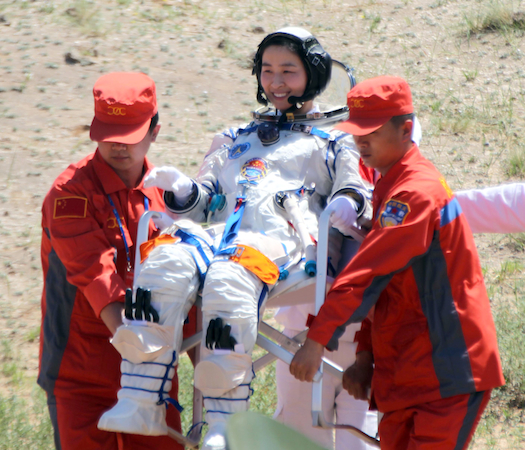

Chinese astronauts have returned to Earth in a re-entry broadcast live on Chinese television, landing safely in Inner Mongolia. We saw the historic launch and docking earlier this month, and now, after more than a week of running tests aboard the solar-powered Tiangong 1 space module, the crew of three is back. Needless to say, this is another big leap for the country.
The Shenzhou 9 flight was China’s fourth manned spaceflight, and the crew of taikonauts–as astronauts are known in the country–includes the first Chinese woman to make the journey into space. The module won’t be retired just yet; it could stick around for another two years, officials say, set to accommodate more missions.
